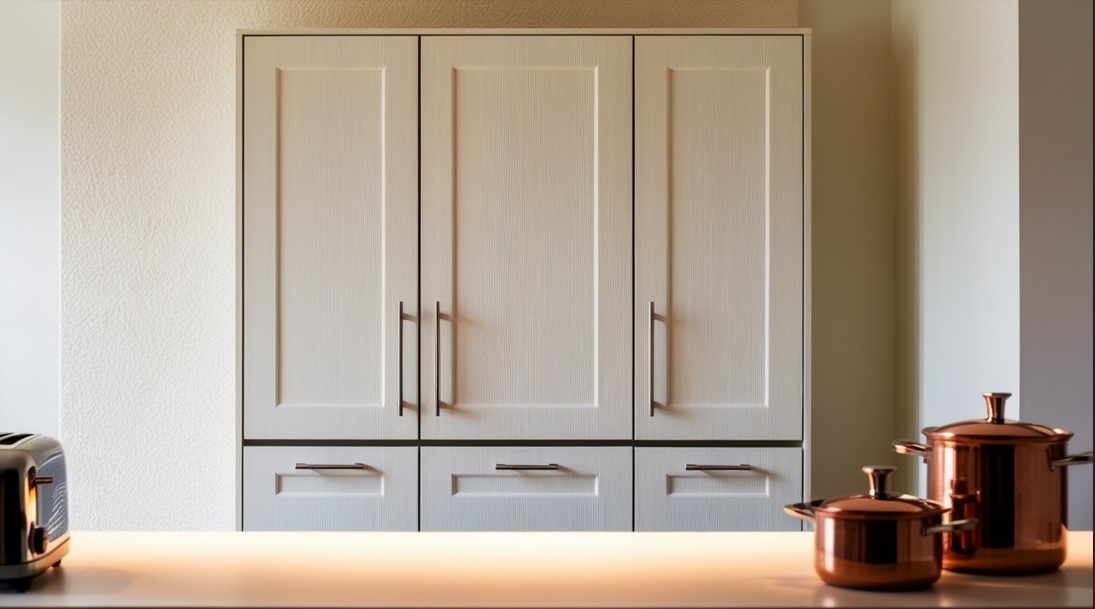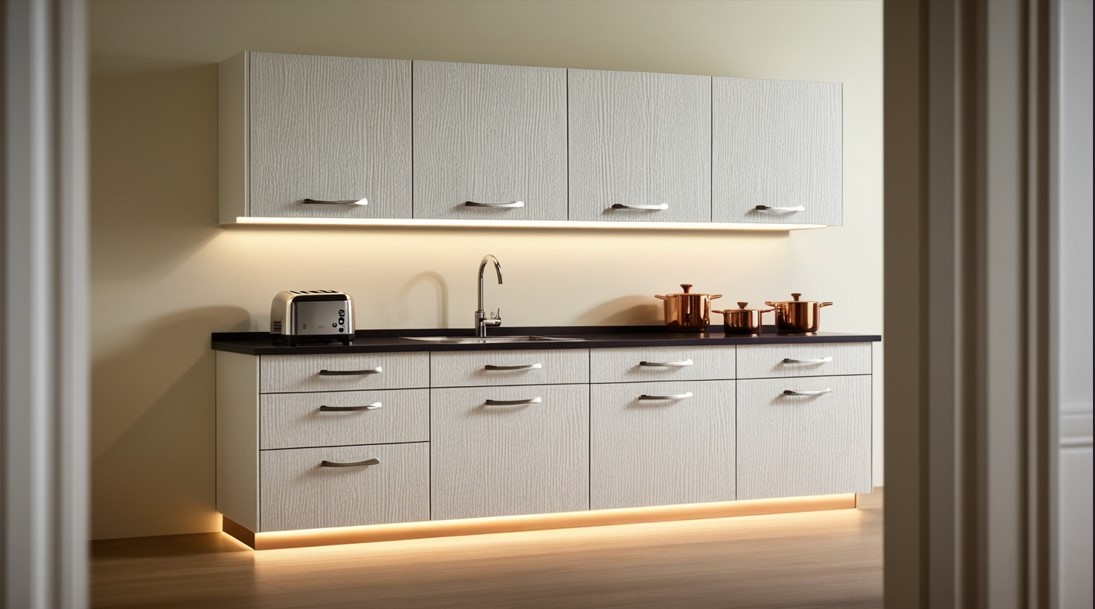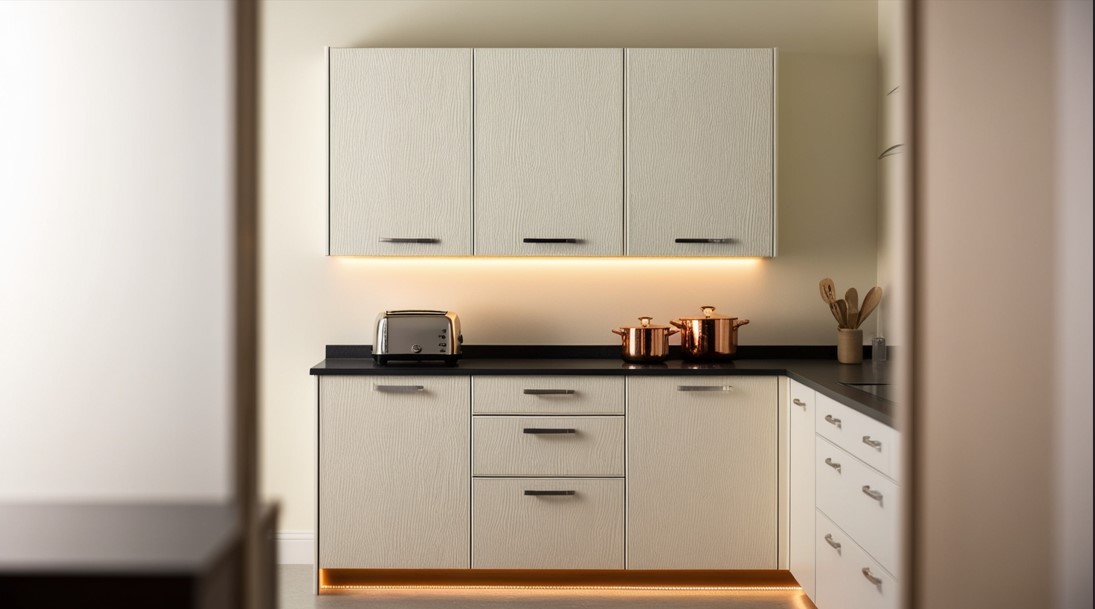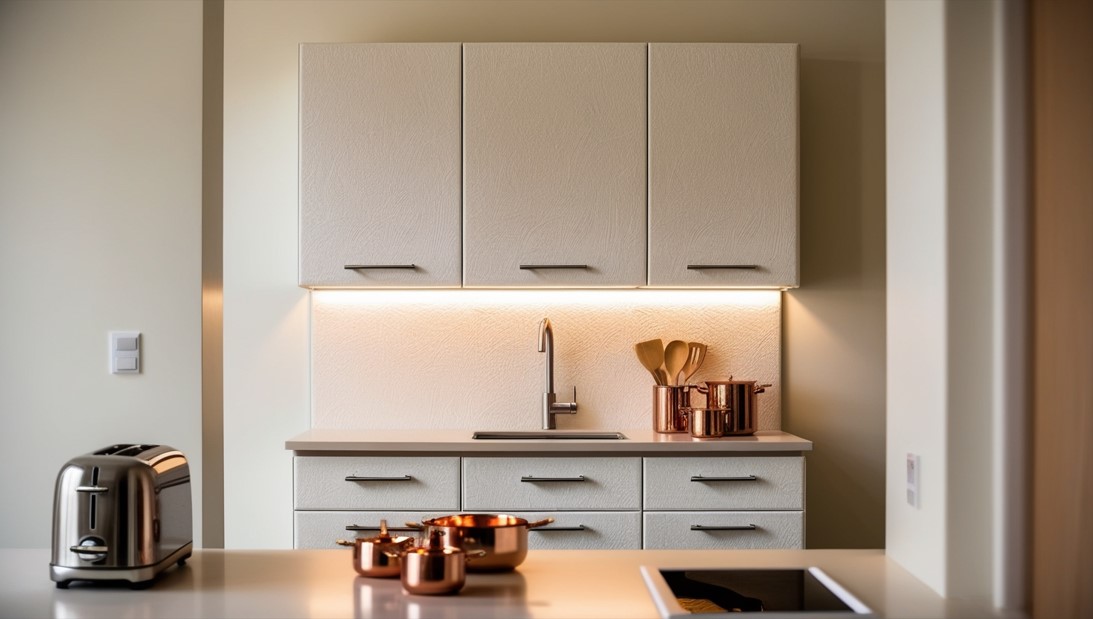When it comes to renovating your kitchen, selecting the right materials for your cabinetry is essential. One material that has been gaining popularity in recent years is PVC foam board. Known for its durability, versatility, and aesthetic appeal, kitchen cabinet PVC foam board furniture offers a wide range of benefits for homeowners looking to upgrade their kitchens.
In this detailed guide, we will explore everything you need to know about PVC foam board kitchen cabinets, from the material’s properties to its advantages and how it compares to other materials. Whether you’re considering PVC foam board for a new kitchen project or an upgrade, this article will help you make an informed decision.
What is PVC Foam Board?
PVC foam board, also known as expanded PVC (Polyvinyl Chloride) foam, is a lightweight yet durable material made from a combination of PVC resin and a foaming agent. This process results in a material with a cellular structure, which gives it several advantages over traditional materials like wood, plywood, or MDF (Medium-Density Fiberboard).
PVC foam boards are commonly used in a variety of applications, including signage, advertising, and construction, but their use in kitchen cabinetry has become increasingly popular due to their unique properties.
Key Properties of PVC Foam Board:
- Lightweight: PVC foam boards are significantly lighter than traditional wood materials, making them easier to handle and install.
- Water-Resistant: Unlike wood, PVC foam board does not absorb water, making it ideal for kitchen environments where moisture is prevalent.
- Durability: PVC foam board is highly durable and resistant to impacts, scratches, and stains.
- Low Maintenance: PVC foam board furniture is easy to clean and maintain, requiring minimal effort to keep it looking new.
- Eco-Friendly: Many PVC foam boards are recyclable and do not contain harmful chemicals, making them a more environmentally friendly option compared to other materials.

Advantages of Kitchen Cabinets Made from PVC Foam Board
1. Moisture Resistance
Kitchens are high-moisture environments, which can wreak havoc on traditional wood and particleboard cabinets. Wood and MDF can absorb moisture, leading to warping, swelling, and mold growth over time. PVC foam board is completely water-resistant, making it an ideal material for kitchen cabinets. It won’t warp, swell, or degrade when exposed to water, ensuring your cabinets remain in excellent condition even in the face of spills or high humidity levels.
2. Long-Lasting Durability
One of the standout features of PVC foam board kitchen cabinets is their long-lasting durability. Unlike wood, PVC foam board is resistant to scratches, dents, and stains, making it an excellent choice for families or anyone who wants cabinets that will stand the test of time. The smooth surface of PVC foam boards is not prone to damage, so your cabinets will look great for years to come.
3. Lightweight and Easy to Install
PVC foam boards are much lighter than traditional wood, making them easier to handle and install. This feature is especially useful if you are a DIY enthusiast or want to save on professional installation costs. Despite being lightweight, PVC foam boards are highly durable, so you don’t have to worry about compromising on strength or quality.
4. Aesthetic Appeal
PVC foam board cabinets are available in a wide range of finishes and colors, offering the flexibility to match any kitchen design. Whether you’re looking for a sleek, modern finish or a more traditional look, PVC foam boards can be customized to suit your preferences. Additionally, the material can be laminated, veneered, or painted to achieve the desired appearance.
Popular finishes include:
- Glossy and matte finishes: Available in a variety of colors, including whites, blacks, and metallic shades.
- Wood grain patterns: PVC foam boards can mimic the appearance of natural wood, offering a wood-like finish without the maintenance.
- Custom designs: If you have a specific design in mind, PVC foam board can be easily customized with unique textures, patterns, and colors.
5. Cost-Effective
While some high-end materials can be expensive, PVC foam board kitchen cabinets offer a cost-effective solution without compromising quality. The material is typically less expensive than solid wood or plywood, and because it is lightweight and easy to install, you can save on both material and labor costs. This makes it an excellent choice for homeowners on a budget who still want stylish and durable cabinets.
6. Eco-Friendly
PVC foam boards are recyclable, making them an eco-friendly choice for environmentally conscious homeowners. Unlike traditional wood, which requires cutting down trees, PVC foam boards are made from synthetic materials that can be recycled at the end of their life cycle. Additionally, many manufacturers are now producing PVC foam boards with eco-friendly processes, further reducing the environmental impact of using this material in kitchen cabinets.

How PVC Foam Board Kitchen Cabinets Compare to Other Materials
PVC Foam Board vs. Wood
Wooden kitchen cabinets are often seen as a high-end choice due to their natural beauty and durability. However, wood is susceptible to warping, cracking, and fading over time, especially when exposed to moisture or sunlight. In contrast, PVC foam board is completely water-resistant, lightweight, and more affordable than wood. While wood offers a more traditional look, PVC foam boards can mimic the appearance of wood through laminate finishes, offering a similar aesthetic with fewer maintenance requirements.
PVC Foam Board vs. MDF
MDF is another popular material for kitchen cabinets due to its smooth surface and affordability. However, MDF can be prone to swelling and warping when exposed to moisture. PVC foam board, on the other hand, is completely water-resistant and more durable than MDF. Additionally, PVC foam board cabinets are easier to maintain, as they don’t require periodic sealing or painting.
PVC Foam Board vs. Plywood
Plywood is a strong and durable material commonly used for kitchen cabinetry. While it is less prone to damage than MDF, it can still be susceptible to moisture damage over time. PVC foam board is a better option for homeowners who want a lightweight, low-maintenance, and moisture-resistant alternative to plywood.
How to Care for PVC Foam Board Kitchen Cabinets
One of the major advantages of PVC foam board furniture is how easy it is to maintain. Here are some simple tips to keep your cabinets looking great:
- Regular Cleaning: Wipe down your cabinets with a damp cloth to remove dust, grease, and food particles. Avoid using harsh chemicals or abrasive sponges, as they can damage the surface.
- Avoid Heavy Impacts: While PVC foam board is durable, it’s still a good idea to avoid hitting or dropping heavy objects on the cabinets, as this could cause cracks or dents.
- Prevent Excessive Heat Exposure: Although PVC foam boards are resistant to moisture, they can be sensitive to extreme temperatures. Avoid placing hot pots or pans directly on the surface of the cabinets.

FAQs About PVC Foam Board Kitchen Cabinets
1. Are PVC foam board kitchen cabinets durable?
Yes, PVC foam board kitchen cabinets are highly durable. They are resistant to scratches, stains, and moisture, making them an excellent choice for kitchens that experience heavy use.
2. How do PVC foam board cabinets compare to traditional wood cabinets?
PVC foam board cabinets are more affordable, lighter, and more resistant to moisture than traditional wood cabinets. While wood offers a classic look, PVC foam boards can mimic the appearance of wood and require less maintenance.
3. Can PVC foam board cabinets be customized?
Yes, PVC foam board cabinets can be customized in terms of size, color, and finish. Whether you want a glossy finish, wood grain pattern, or a custom design, PVC foam boards offer a wide range of aesthetic options.
4. Are PVC foam board kitchen cabinets eco-friendly?
Yes, many PVC foam boards are recyclable, and the material is a more environmentally friendly option compared to traditional wood, as it does not require cutting down trees.
5. How do I clean PVC foam board cabinets?
Simply wipe your PVC foam board cabinets with a damp cloth and mild detergent to remove dirt and grease. Avoid using abrasive materials or harsh chemicals.
Conclusion
If you’re looking for a durable, cost-effective, and low-maintenance solution for your kitchen cabinets, PVC foam board kitchen cabinets offer an excellent option. With their moisture resistance, durability, and aesthetic versatility, PVC foam boards are quickly becoming a go-to choice for homeowners looking to update their kitchen. Whether you’re renovating your entire kitchen or simply replacing a few cabinets, PVC foam board offers a stylish, long-lasting, and eco-friendly solution.

